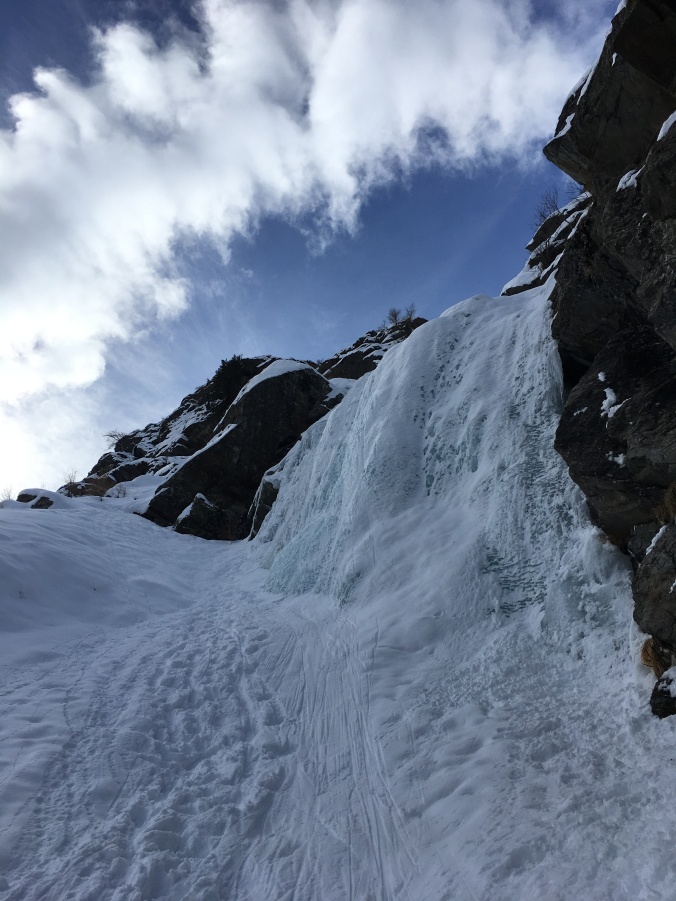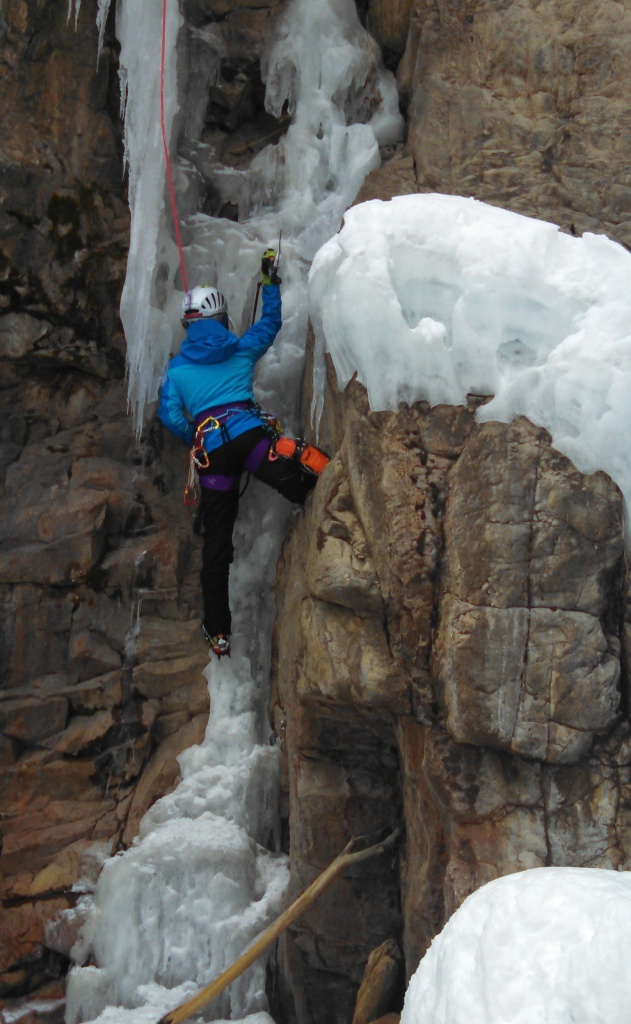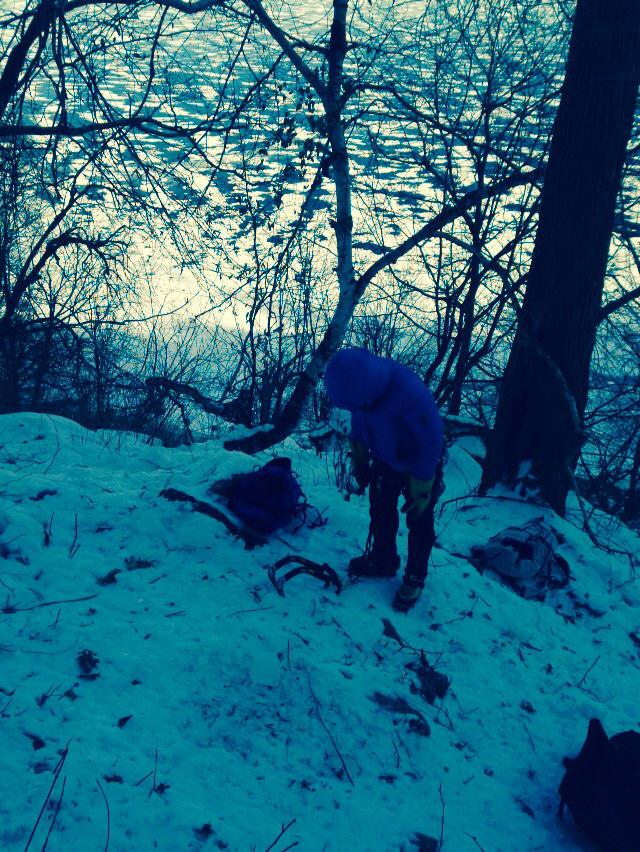Close to three weeks after departing for Chamonix, I am finally getting around to writing and posting about my experiences there and the surrounding areas. While I was on my big skiing road trip I felt compelled to blog about a place and/or experience quite quickly, so as not to forget details I wanted to document; and also so as not to let things build up so much that writing would feel overwhelming. I know that I have a tendency to be quite emotional/volatile when I am documenting my emotions and feelings soon after an event. While there is something to be said about letting time pass and processing thoughts, I am at that point where it feels like there is too much to write about.
This was my first visit to Chamonix, and came about by the kind invitation of my friend Yves who I stayed, skied, and ice-climbed with the entire time. I am surprised we were able to spend close to a fortnight with each other, in a small space and with each other all day, without killing each other. I could not have asked for a more accommodating, generous, and wonderful host.
My journey to Geneva got off to an inauspicious start. My original Boston to Montreal to Geneva route got completely wiped out after my original Boston to Montreal flight was cancelled due to weather (hard to believe since the snow was very light in Boston), and then my later Boston to Montreal flight was sure to be delayed thus ensuring I would miss my connecting flight. While I was pissed with Air Canada (there will be an Air Canada-shaming post later) for the original flight cancellation, I will say they did try hard to find an alternative and called me to ask me to come to the gate when I was outside security killing time for the later Boston to Montreal flight, when it was apparent I would miss my flight. After a bit of scrambling on their part, and even the gate attendant holding the departing plane for me while he made phone calls, I agreed to get on the Boston to Toronto, Toronto to London Heathrow (LHR), LHR to Geneva flights. Of course having to go through two connections instead of one did not make me happy, but the alternative was arriving in Geneva one day later versus 4 hours later. Connecting through Toronto and LHR did have me going through nice airports with plenty of amenities, and incidentally, places where I have family should I needed to spend a night/long time in each of these places.
It was a real treat to fly into Geneva on a sunny day; I could not believe it was wintertime. The views of the Alps in the distance (I think I was looking at Parc naturel regional du Haut-Jura) were spectacular. I was struck by how clear the water was in Lac Léman; it could have been an alpine lake, or even the clear waters on a Pacific Ocean beach. I was also struck by how much wealth there was, as I saw the châteaux and boat docks around the lake. We also know how the Swiss acquire(d) their wealth in a clandestine and dishonest manner, which leaves a rather bad taste in my mouth.
Yves picked me up in Geneva, and as we drove to the Chamonix-Mont Blanc valley, you could see the western part of the Mont Blanc massif. It was quite a sight to see the snowy peaks, including the Dômes de Miage and Mont Blanc behind it, but I knew more spectacular views awaited me in Chamonix.

Mont Blanc massif East (Source: Wikipedia)

Mont Blanc Massif West (Source: Wikipedia)

Yves picked me up in Geneva, and as we drove to the Chamonix-Mont Blanc valley, you could see the western part of the Mont Blanc massif. It was quite a sight to see the snowy peaks, including the Dômes de Miage and Mont Blanc behind it, but I knew more spectacular views awaited me in Chamonix.
From left to right, you can see the peaks of the Aiguille du Grepon, Aiguille de Blâitiere, Aiguille du Peigne, Aiguille du Plan, and the Aiguille du Midi:

View of Aiguille des Charmoz to Aiguille du Midi from the town

Chamonix church
I also got my first taste of the hearty Savoie food of the region: ridiculous amounts of cheese smothering a baguette with big morel mushrooms on top, served with even more bread. This pretty much characterizes the cuisine of the region: simple, rich, hefty, mountain fare, developed and consumed by the farmers who occupied the region before it became a winter sports destination.
I had a little bit of time to myself the next morning, and as I walked through the town to sort out some lift ticket inquiries, I saw why the location of the village is so spectacular.

View of Brévant from the front door of where I was staying
Chamonix is really quite uniquely situated in a valley surrounded by a lifetime of climbing/skiing/mountaineering. The peaks in this part of the Alps are so striking. I can see why it would be difficult to leave if you are an ambitious mountain (wo)man.

How can one tire of these views
Yves brought up the good point that being surrounded by all these peaks and terrain can make a person feel a certain pressure. I am sure being surrounded by lots of very skilled skiers/climbers does not help. While I am not totally old, I think I am at a point in my life where orienting my life around chasing hard lines is not really practical any more, especially given my disability. Nevertheless, there is still an internal tension around leading a comfortable, financially-stable life, and being a bit more of a dirt-bag. While Cham was a great place to visit, and I would love to go back there for more climbing and skiing, Cham, for me, is not a practical choice for year-round, permanent living; I don’t have EU citizenship/residency, I don’t speak French, and there is not enough culturally/intellectually outside of winter sports.
I love that Cham is at the intersection of three countries and that we were driving so casually between Italy/France, France/Switzerland. It gets a lot of tourist traffic, but mostly from Europe/Britain. Goodness, there were a lot of Brits there. It is not ethnically diverse at all, but what mountain town is, I guess (I know I do a lot of “white people sports”). The search for the “perfect” mountain town for me continues…







































































